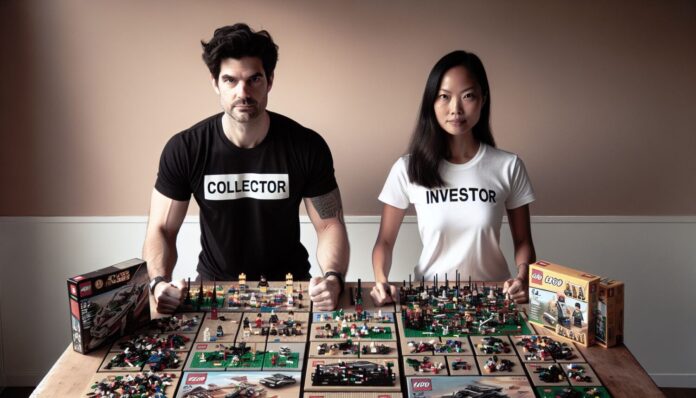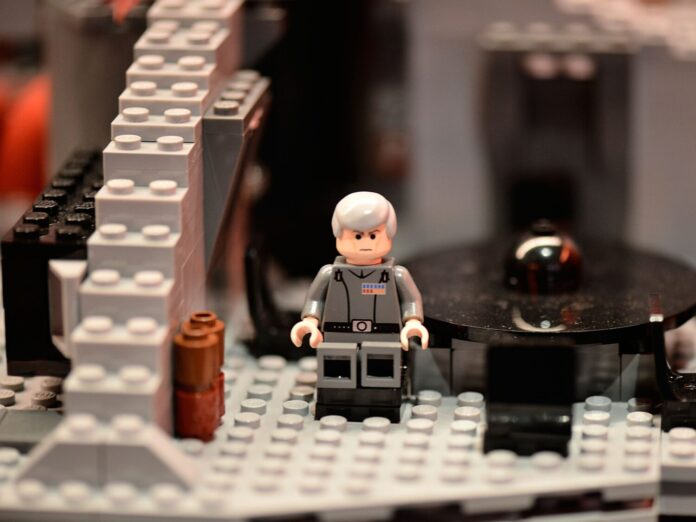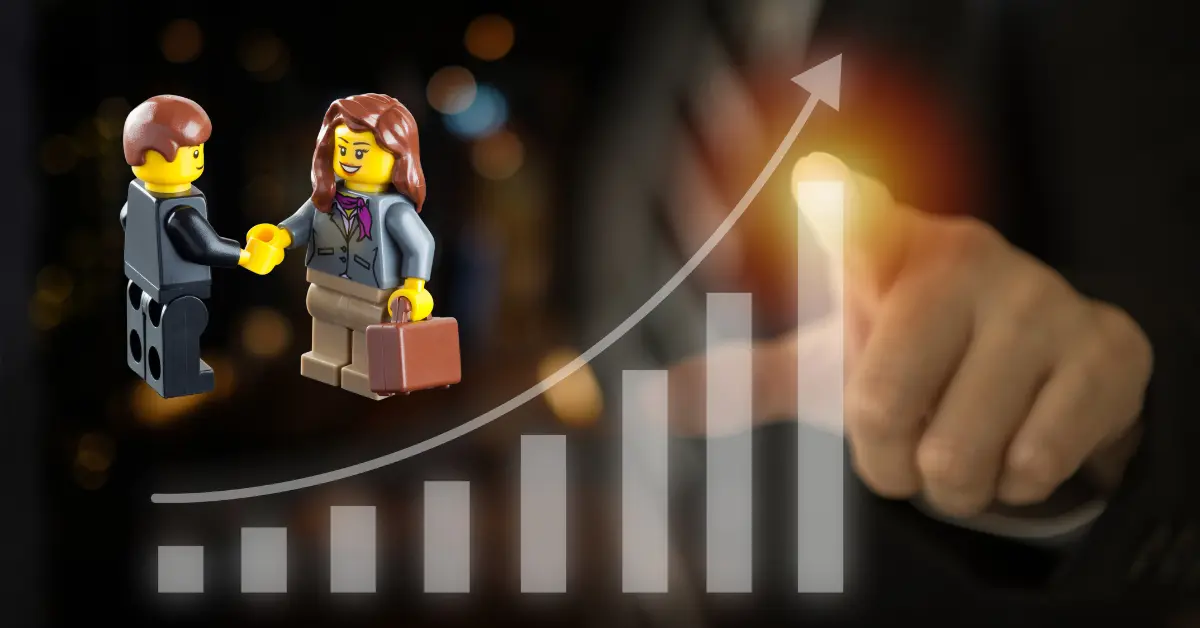
Investing in LEGO sets presents an intriguing opportunity, blending the joy of collecting with the potential for financial gain. As collectors and investors navigate the LEGO market, understanding the dynamics of buying sets that appreciate in value over time becomes crucial.
This insight has gained traction within the LEGO enthusiast community, notably among Brickfact members who share their experiences online. Additionally, investing in LEGO isn’t limited to physical sets; it extends to purchasing stock in its parent company, KIRKBI A/S, underscoring the diverse avenues for engaging with LEGO as an investment.
The landscape of LEGO investing is broader than merely acquiring rare sets; it involves analyzing market trends, leveraging resources like a LEGO price guide, and distinguishing between collecting for pleasure and investing for profit.
Platforms such as Investabrick offer guidance in making informed, investment-grade decisions within this niche market. This article delves into the heart of LEGO investing, breaking down the factors to consider, from initial purchase to eventual sale, and explores how collectors and investors alike can optimize their strategies for success.
Understanding LEGO Collecting

LEGO collecting transcends mere playtime activity, evolving into a cherished hobby and a strategic investment across various demographics. Originating in childhood fascination, the allure of LEGO sets often extends into adulthood, where the blend of nostalgia and creativity continues to resonate deeply.
These iconic blocks, designed to interlock seamlessly regardless of set or era, exemplify enduring design and universal appeal. Collectors might focus on either building elaborate structures or maintaining their kits in pristine condition to preserve their value.
Key Strategies for LEGO Collectors
- Acquisition of Rare Sets: Focus on promotional, limited edition, and retired sets which are less available and, therefore, more valuable over time. Utilize resources like eBay, Bricklink, and LEGO Forums to locate these rare finds.
- Preservation and Care: Handle sets with care, store them in optimal conditions, and clean them as necessary to maintain their condition. This is crucial for preserving their resale value.
- Networking and Community Engagement: Engage with the AFOL community and other collector groups. These networks can provide valuable insights and opportunities to acquire unique sets.
Collecting LEGO sets not only offers the joy of building and exploring creative possibilities but also serves as an investment avenue where the rarity and desirability of sets can significantly increase their financial value.
Platforms like Investabrick highlight the distinction between collecting for pleasure and investing for profit, offering tools and insights that help in making informed decisions about which sets might represent the best investment potential.
This dual approach enriches the collecting experience, making it both a fulfilling hobby and a potential financial venture.
Understanding LEGO Investing

Investing in LEGO sets merges passion with profit, offering a unique avenue for both LEGO enthusiasts and seasoned investors. The allure of LEGO investing lies in its simplicity and the tangible nature of the assets involved. Here, we delve into the mechanics and strategies that define successful LEGO investing.
Key Factors Influencing LEGO Set Values
- Rarity and Exclusivity: Limited edition and retired LEGO sets often see the highest appreciation due to their scarcity. Sets like The Grand Carousel and The Taj Mahal have shown remarkable annual returns, highlighting the importance of exclusivity in investment decisions.
- Condition and Completeness: New or sealed sets command higher prices in the market. Even the presence of exclusive minifigures can significantly enhance a set’s value.
- Market Demand: Themes such as Star Wars or Harry Potter remain perennial favorites, driving up prices due to sustained popular demand. Understanding which themes are coveted can guide investors in choosing the right sets to acquire.
Strategic Acquisition and Sales
- Purchase and Storage: Acquiring sets at retail or discounted prices can increase potential profit margins. Proper storage is crucial to maintain the condition of the sets, as this directly impacts their resale value.
- Timing the Market: Selling strategies should be well-timed, ideally waiting for 2-3 years post-retirement of a set to maximize returns. Platforms like eBay and BrickLink are instrumental for reaching the right buyers at the right time.
Leveraging Platforms for Enhanced Decision Making
Investing platforms like Investabrick play a pivotal role by providing essential data and tools for LEGO investors. These platforms offer insights into market trends, investment-grade decisions, and potential returns, bridging the gap between collecting for pleasure and investing for profit.
By engaging with such resources, investors can make informed decisions, optimizing their investment strategies while enjoying the process of collecting rare and valuable LEGO sets.
Analyzing Market Trends for LEGO Sets
Market Trends Overview

Investing in LEGO has shown a consistent upward trend, with an average annual return of 10-11%, outstripping traditional investments like stocks and bonds. The allure of LEGO investing is largely driven by the rarity and demand for specific sets. For instance, thematic sets from the Star Wars universe have seen the highest appreciation due to their iconic status and limited availability.
Factors Impacting LEGO Set Prices
- Rarity and Production Volume: Limited edition and retired sets generally achieve higher market value. For example, the LEGO Death Star set’s price has escalated to match a Tesla share, illustrating the high demand for such exclusive items.
- Market Demand Dynamics: Sets related to popular themes like Star Wars or Harry Potter maintain strong demand, influencing higher secondary market prices. The 75330 Dagobah Jedi Training Diorama, although retired, holds a significant value due to its thematic appeal.
- Age and Retirement of Sets: Typically, LEGO sets begin appreciating in value 2-3 years post-retirement, with some sets achieving a price growth of up to 600% annually on the secondary market.
Pros and Cons of LEGO Collecting
Advantages of LEGO Collecting

- Financial Potential: LEGO sets, especially those kept sealed and in pristine condition, can appreciate significantly. For instance, a sealed 3450 Statue of Liberty set from 2000 is now valued around $3000, showcasing substantial financial gain.
- Educational and Developmental Benefits: LEGO collecting isn’t just fun; it’s educational. It enhances fine motor skills, boosts spatial awareness, and improves problem-solving abilities. Additionally, it promotes creativity and experimentation, as collectors often build custom creations beyond the instructions provided.
- Emotional and Social Rewards: Beyond the bricks, LEGO collecting offers emotional benefits such as nostalgia, which reconnects adults with cherished childhood memories. It also fosters social interactions through community engagement and can even aid in developing communication and teamwork skills, particularly in children.
Challenges of LEGO Collecting
- Cost and Space Constraints: Starting and maintaining a LEGO collection can be costly, with some sets running into hundreds of dollars. Moreover, large collections require significant storage space, which can be a challenge for those in smaller living environments.
- Market Variability and Maintenance: While some LEGO sets increase in value, others may not, making the market somewhat unpredictable. Additionally, maintaining the condition of the sets to ensure value retention—ensuring all pieces are accounted for and in good condition—can be time-consuming and requires meticulous organization.
- Risk Factors: There are inherent risks involved, such as potential damage during storage or transport and the depreciation in value once a set is opened. Collectors need to be cautious and well-prepared to mitigate these risks effectively.
Leveraging Collecting for Investment
Platforms like Investabrick can significantly aid collectors who are looking to transition into investing. By providing a robust LEGO price guide and market trend analysis, these platforms help distinguish between collecting for pleasure and investing for profit, enabling enthusiasts to make informed decisions that best suit their financial and personal goals.
Pros and Cons of LEGO Investing
Advantages of LEGO Investing

- High Return on Investment: LEGO has proven to be a lucrative investment, with an average annual return of 11% from 1987 to 2015, surpassing traditional assets like gold and stocks. This impressive performance is exemplified by sets such as the Lego Ideas 21310 Old Fishing Store, which appreciated by 34.80% per year as of June 2022.
- Consistent Value Increase: The value of LEGO sets typically rises, even during economic downturns, particularly those based on popular films or landmarks. This consistent appreciation makes LEGO a compelling option for investors seeking stable growth in their portfolio.
- Tangible Asset with High Liquidity: LEGO sets are physical, tangible investments that generally maintain high demand and liquidity. This allows for relatively quick sales, often facilitated by platforms like eBay and BrickLink, which are crucial for reaching the right market at the optimal time.
Challenges of LEGO Investing
- Storage and Maintenance Costs: Unlike intangible investments, LEGO sets require physical space for storage and careful handling to preserve their condition and packaging, which is vital for maintaining their value. For large collections, a dedicated storage space or even a warehouse might be necessary, along with potential inventory insurance costs.
- Risk of Value Fluctuation Due to Re-releases: The investment risk includes potential devaluation due to LEGO re-releasing popular sets. This can significantly impact the market value of the original versions, making it a critical factor to monitor.
- Market Knowledge Requirement: Successful LEGO investing demands a deep understanding of the market. Investors need to identify which sets are likely to appreciate in value, necessitating a thorough analysis and perhaps guidance from specialized platforms like Investabrick, which offer insights into market trends and investment-grade decisions.
Strategic Insights for LEGO Investors
Investabrick and similar platforms provide essential tools for distinguishing between collecting for pleasure and investing for profit. These platforms offer a comprehensive LEGO price guide and real-time market data, helping investors make informed decisions about which sets to purchase and when to sell them.
By leveraging such resources, investors can optimize their strategies to maximize returns while enjoying the process of collecting unique and valuable LEGO sets.
Combining Passion with Profit

Investing in LEGO combines the joy of a cherished childhood hobby with the potential for substantial financial returns. For many, like Joney Talks, LEGO is steeped in nostalgia, making the investment not just financially rewarding but also emotionally fulfilling.
This dual benefit attracts a diverse group of enthusiasts worldwide, transcending cultural and geographical boundaries, and turning a simple pastime into a profitable venture.
Key Insights on LEGO Investment
- Long-Term Appreciation: LEGO sets have demonstrated consistent growth in value over time, particularly those that are rare or hard to find. For instance, certain sets have been known to sell for multiple times their original price years after their release.
- Nostalgic Value: The emotional appeal of LEGO, linked to fond childhood memories, enhances its value as collectors are often willing to pay a premium for sets that evoke a sense of nostalgia.
- Global Appeal: LEGO’s widespread popularity ensures a broad market, potentially increasing the liquidity and profitability of investing in these sets.
Platforms like Investabrick facilitate the transition from collecting as a hobby to investing for profit by providing valuable insights and tools. These platforms help enthusiasts make informed decisions by analyzing market trends and identifying sets with the best investment potential.
By leveraging such resources, individuals can maximize their investment returns while indulging in a hobby that brings personal joy and satisfaction.
Conclusion

Navigating the intricate world of LEGO investing and collecting reveals a fascinating intersection of passion and profit. This journey unearths the delicate balance between the joy of collecting sets that hark back to yesteryears of childhood delight and the strategic foresight of investing in pieces that promise substantial economic returns down the line.
Acknowledging the roles platforms like Investabrick play in this ecosystem is crucial; they offer invaluable insights and tools that bridge the gap between collecting for pleasure and investing for profit, making the process not only more manageable but significantly more rewarding.
Through the lens of Investabrick, both seasoned and budding LEGO investors can navigate the market with greater confidence, making decisions that are not only informed but also aligned with their personal and financial goals.
In the grand tapestry of LEGO investing, it becomes clear that the lure of LEGO transcends simple play. It is a potent blend of nostalgia, creativity, and financial opportunity.
The insights and reflections shared in this article aim to serve as a comprehensive guide for those embarking on or navigating through the fascinating world of LEGO collecting and investing.
With a keen understanding of market trends, the importance of condition and rarity, and an appreciation for the platforms that aid in decision-making, individuals are well-positioned to optimize their investment strategies.
As we step back and contemplate the broader implications, it is evident that the world of LEGO presents an enticing avenue for combining the joys of a cherished pastime with the pragmatic ambitions of financial gain, thereby weaving together the threads of passion and profit into a compelling narrative.





